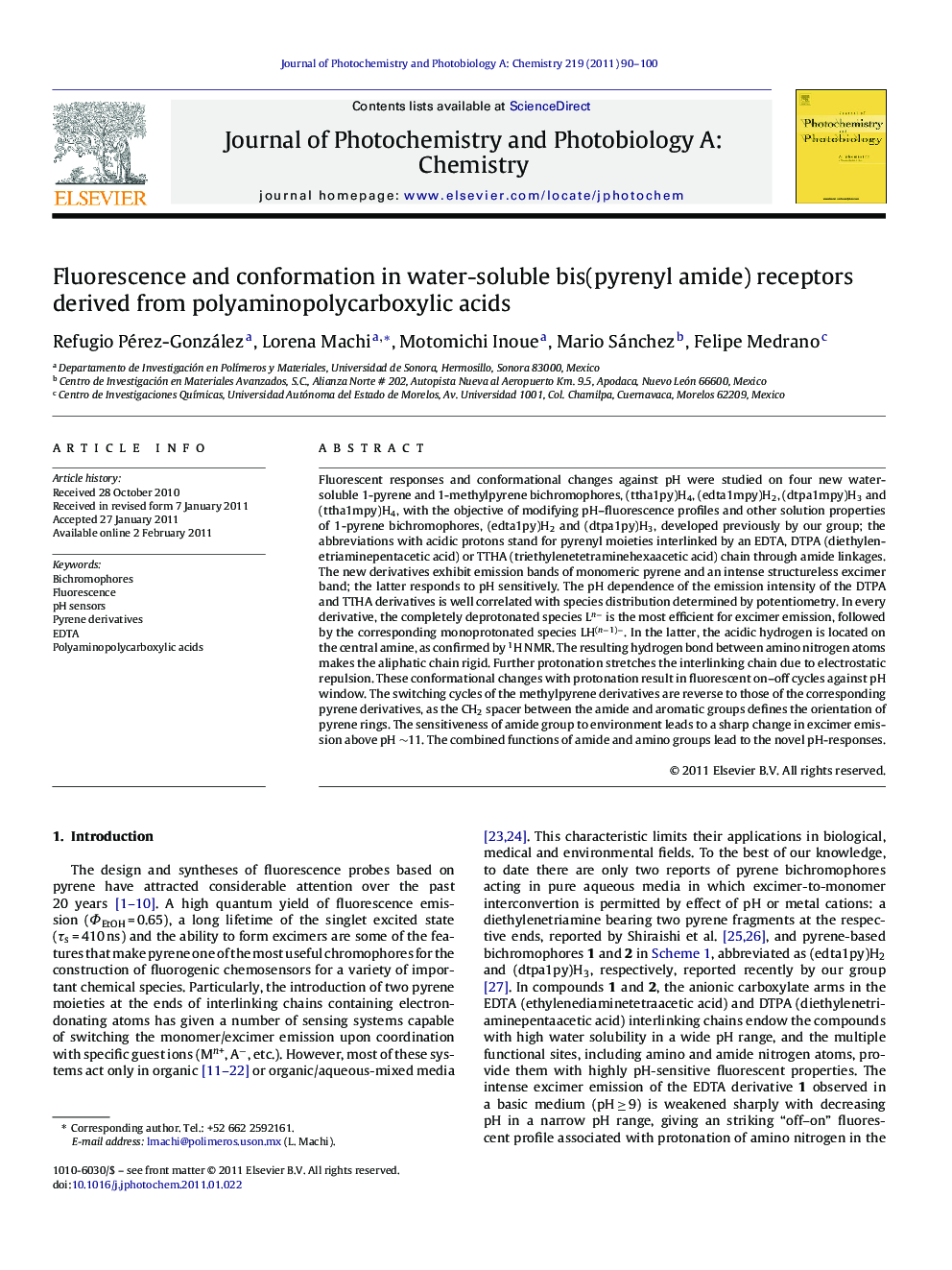| کد مقاله | کد نشریه | سال انتشار | مقاله انگلیسی | نسخه تمام متن |
|---|---|---|---|---|
| 28804 | 44093 | 2011 | 11 صفحه PDF | دانلود رایگان |

Fluorescent responses and conformational changes against pH were studied on four new water-soluble 1-pyrene and 1-methylpyrene bichromophores, (ttha1py)H4, (edta1mpy)H2, (dtpa1mpy)H3 and (ttha1mpy)H4, with the objective of modifying pH–fluorescence profiles and other solution properties of 1-pyrene bichromophores, (edta1py)H2 and (dtpa1py)H3, developed previously by our group; the abbreviations with acidic protons stand for pyrenyl moieties interlinked by an EDTA, DTPA (diethylenetriaminepentacetic acid) or TTHA (triethylenetetraminehexaacetic acid) chain through amide linkages. The new derivatives exhibit emission bands of monomeric pyrene and an intense structureless excimer band; the latter responds to pH sensitively. The pH dependence of the emission intensity of the DTPA and TTHA derivatives is well correlated with species distribution determined by potentiometry. In every derivative, the completely deprotonated species Ln− is the most efficient for excimer emission, followed by the corresponding monoprotonated species LH(n−1)−. In the latter, the acidic hydrogen is located on the central amine, as confirmed by 1H NMR. The resulting hydrogen bond between amino nitrogen atoms makes the aliphatic chain rigid. Further protonation stretches the interlinking chain due to electrostatic repulsion. These conformational changes with protonation result in fluorescent on–off cycles against pH window. The switching cycles of the methylpyrene derivatives are reverse to those of the corresponding pyrene derivatives, as the CH2 spacer between the amide and aromatic groups defines the orientation of pyrene rings. The sensitiveness of amide group to environment leads to a sharp change in excimer emission above pH ∼11. The combined functions of amide and amino groups lead to the novel pH-responses.
Journal: Journal of Photochemistry and Photobiology A: Chemistry - Volume 219, Issue 1, 5 March 2011, Pages 90–100